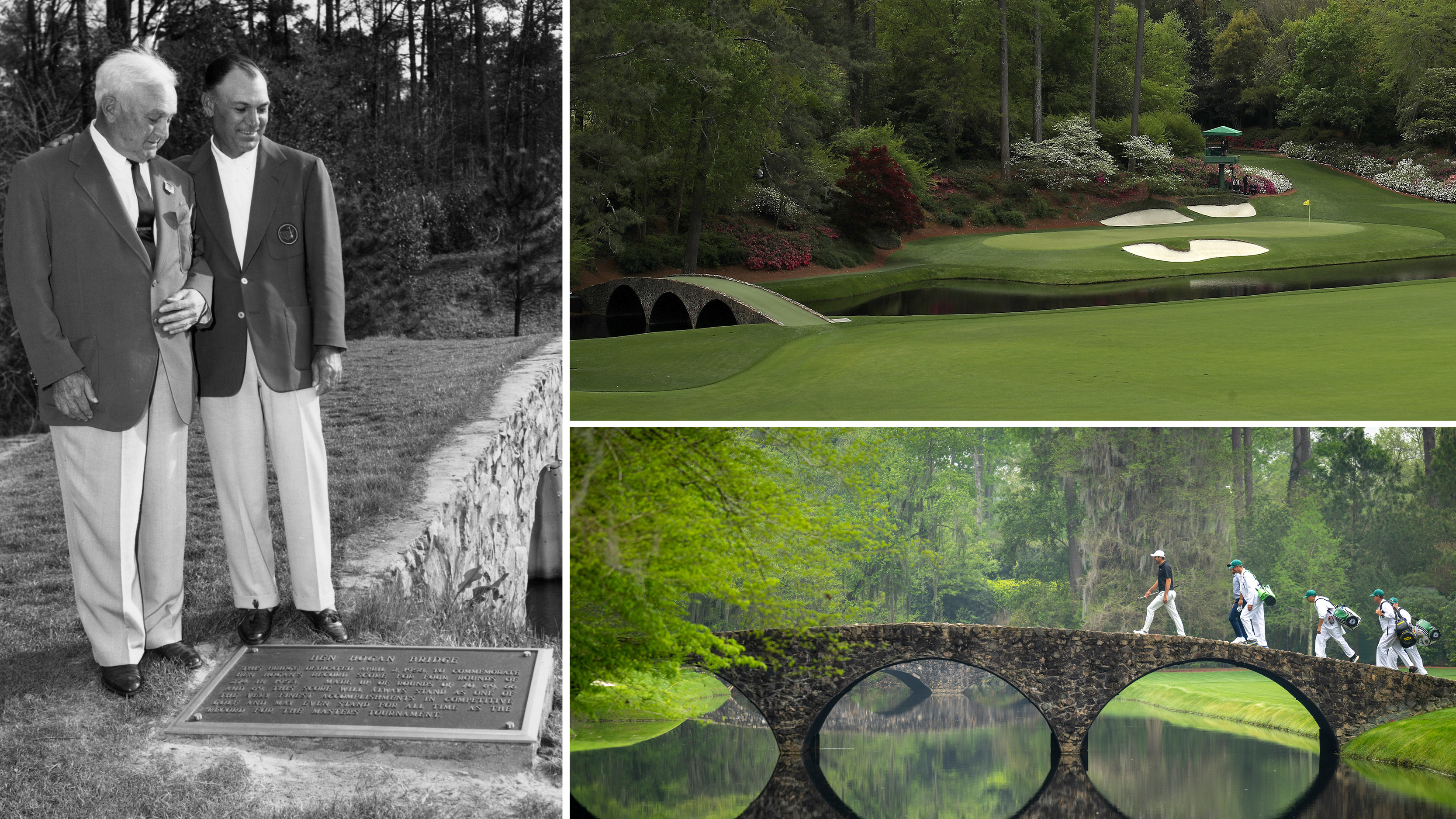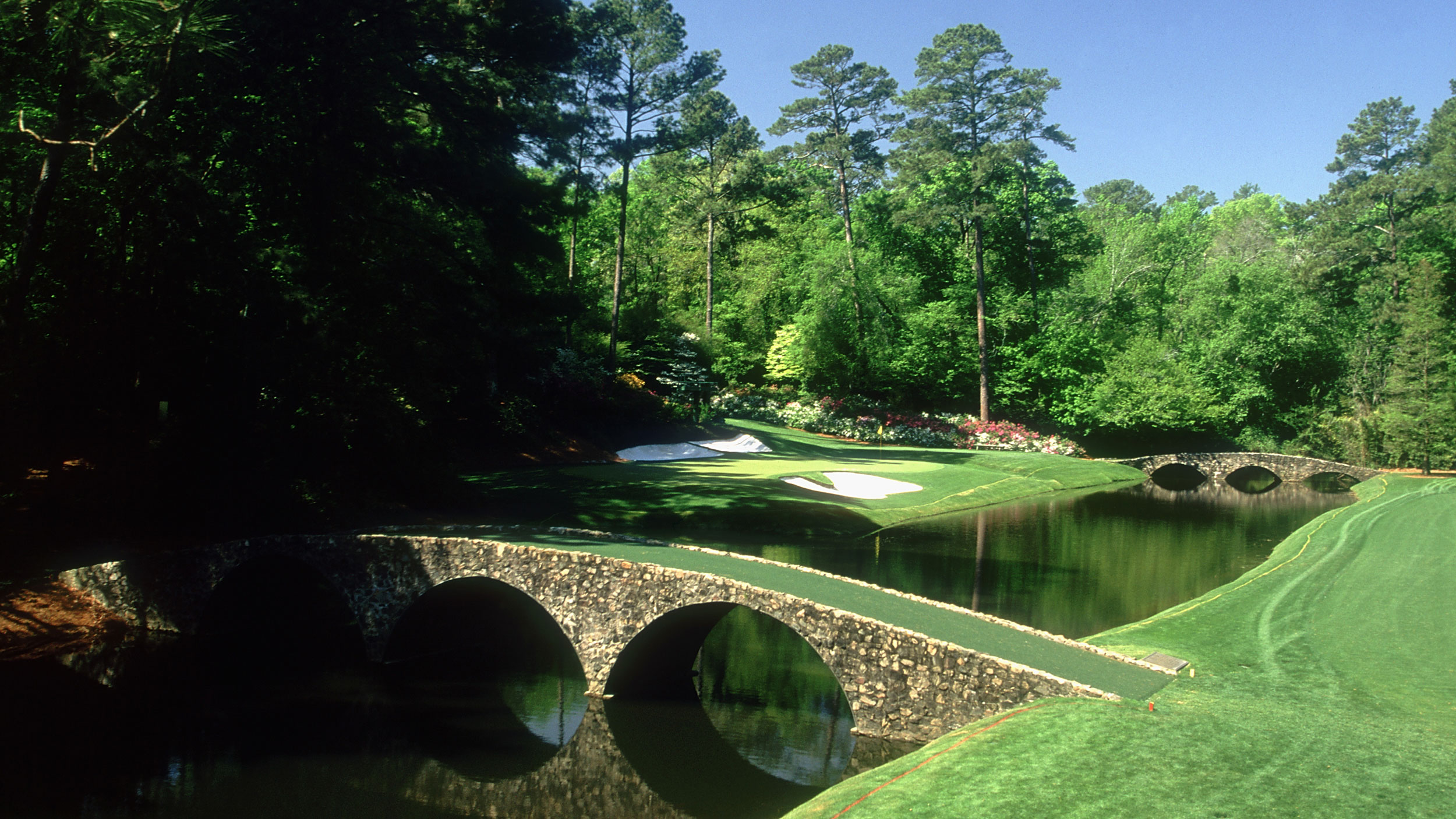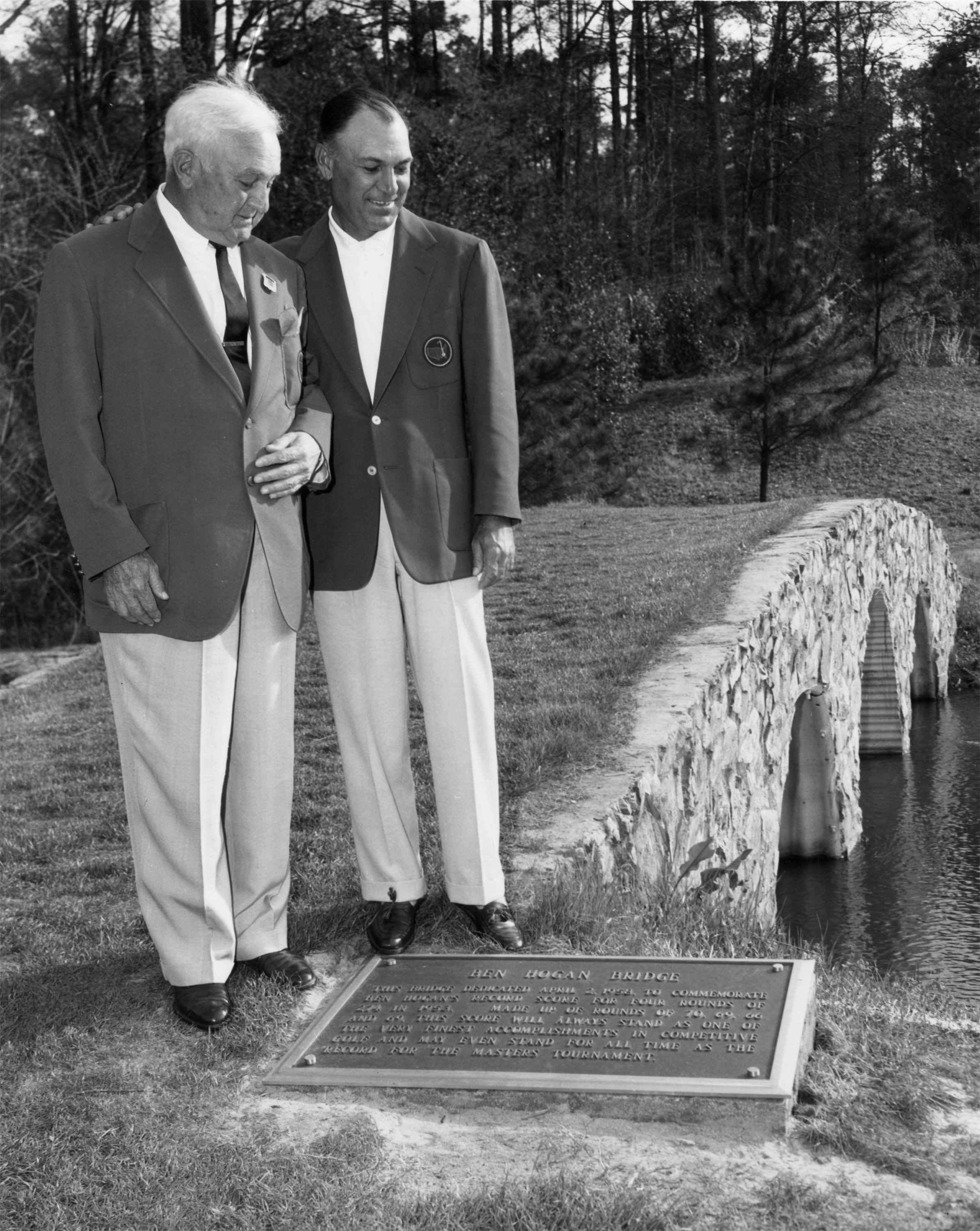
The Hogan Bridge at Augusta National is one of the most photographed sights during The Masters as it is the footbridge that takes golfers to the green on the famous 12th hole.
It is made of stone and crosses the iconic Rae’s Creek, which sits in front of the 12th green and 13th tee. The Hogan Bridge dates back to the 1950s and has a slight arch to it. It was originally laid with grass but now features artificial turf to help players with grip.
The bridge was named the Hogan Bridge after Ben Hogan, and commemorates his record-breaking 1953 Masters victory, where the Texan won his second Green Jacket with a score of 274 (14-under-par).

The dedication ceremony came five years later and was on the same day as that of the Nelson Bridge - April 2, 1958. A plaque was unveiled which is embedded in the ground at the entrance to the bridge.
The plaque reads:
“This bridge dedicated April 2, 1958, to commemorate Ben Hogan's record score for four rounds of 274 in 1953 made up of rounds of 70, 69, 66 and 69. This score will always stand as one of the very finest accomplishments in competitive golf and may even stand for all time as the record for The Masters tournament.”

The Hogan Bridge at Augusta National is one of three notable ones, including the Sarazen Bridge on the 15th and the aforementioned Nelson Bridge, which takes players back over Rae's Creek after hitting their tee shots on the 13th.
The iconic 155 yard 12th hole at Augusta, named Golden Bell, is one of the most famous golf holes in the world and forms the second of the three holes that make up Amen Corner.
With the 12th hole being one of the most well known par 3s in the game, the Hogan Bridge also acts as a popular photo spot. Players are regularly seen posing for photos on the bridge, with the 12th green in the background.

Ben Hogan's record-breaking 1953 Masters total
Hogan’s 14-under-par 274 total in 1953 had eclipsed the previous record score by five strokes. He shot four rounds in the 60s to beat Ed Oliver by five.
He became the first over-40 to win The Masters and went on to win the US Open and British Open that year, which was the last time a golfer won The Masters, US Open and The Open in the same year.
His 274 total was the Masters scoring record for 12 years before Jack Nicklaus beat it by three in 1965.

This record had been established by Ralph Guldahl in 1939, who shot 279, with Claude Harmon matching it in 1948.
While Augusta National’s view was that Hogan‘s 274 ‘may even stand for all time as the record’, it was eventually beaten 12 years later when Jack Nicklaus shot 271 (-17) to win his second Masters.

Nicklaus’ 271 was equalled by Raymond Floyd in 1976, and broken by one shot by Tiger Woods in 1997.
Jordan Spieth equalled Tiger Woods’ record in 2015, before Dustin Johnson managed to score 268 (20-under) on the way to victory at the 2020 tournament.







